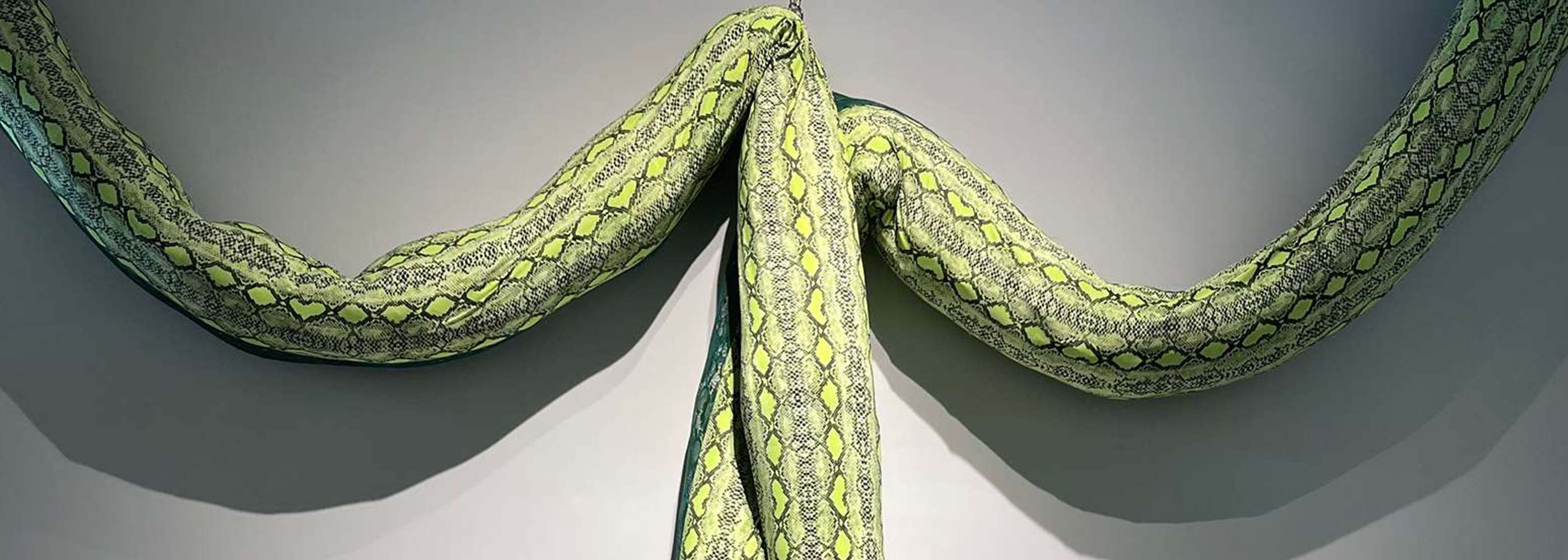

The inspiration for this artwork comes from ancient iconography depicting Fuxi and Nüwa, where they are intertwined, with their upper bodies in human form and their lower bodies in a snake-like form.
I sewed two cylindrical, snake-like shapes from lace and snake-patterned fabric, symbolizing femininity. These shapes are bent and twisted into an installation that hangs in the air. This piece aims to present a natural, primitive force; the snake is an ancient totem and a symbol of mystery and primordial power.
In ancient China, snakes symbolized reproduction and derivation; in ancient India, they symbolized the cycle of life, death, and rebirth; and in ancient Egypt, they symbolized power. However, snakes can also have negative connotations, such as the serpent in Genesis that tempted Eve to eat the apple from the Tree of Knowledge, leading to the expulsion of humanity from the Garden of Eden. Medusa in ancient Greek mythology was also a snake incarnation. This reflects on nature and women as well.
Zhong Ting: As an eco-feminist artist, Li Xinmo extends the female body into nature, society, and culture, demonstrating her concern for women's issues and ecological problems. As a totem of ancient fertility worship, Fuxi and Nüwa symbolize the transition from a matriarchal clan-based partnership to a patriarchal clan-based power relationship.
The way founding myths are written often implies the manner in which people are socially and culturally constructed. Li Xinmo employs feminine lace and serpentine fabrics to create the intertwined bodies of Nüwa and Fuxi, highlighting the "body politics" of women.
Embedded in this ancient iconography, we see that humans, gods, and animals are interwoven, conveying the confusion and awe that our ancestors felt towards the mysterious power of nature. The fear of the unknown is sufficient to cause one force to plunder and enslave another.